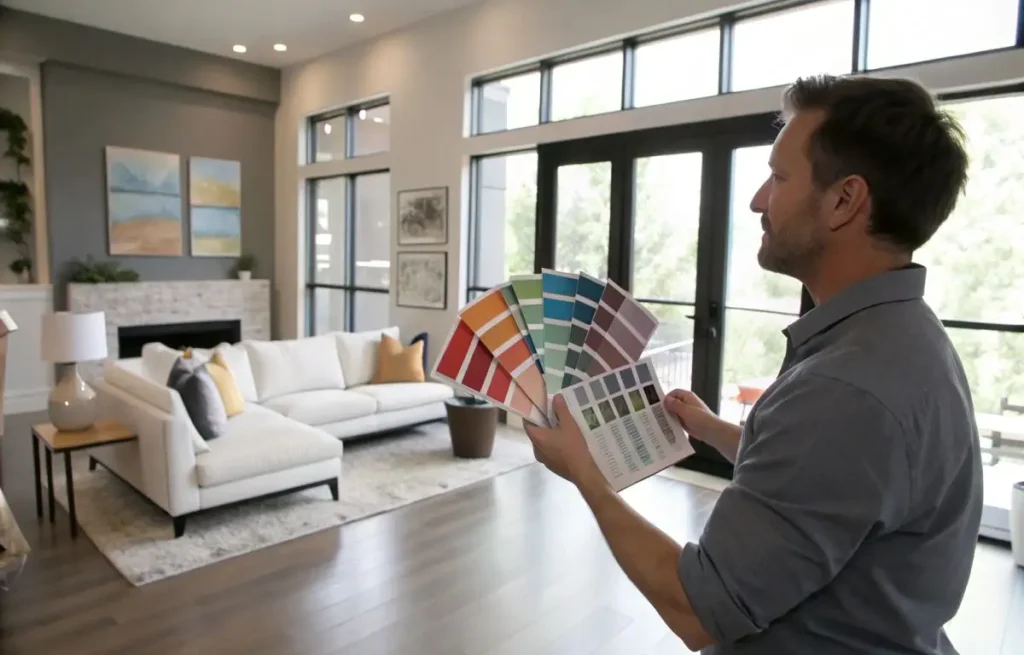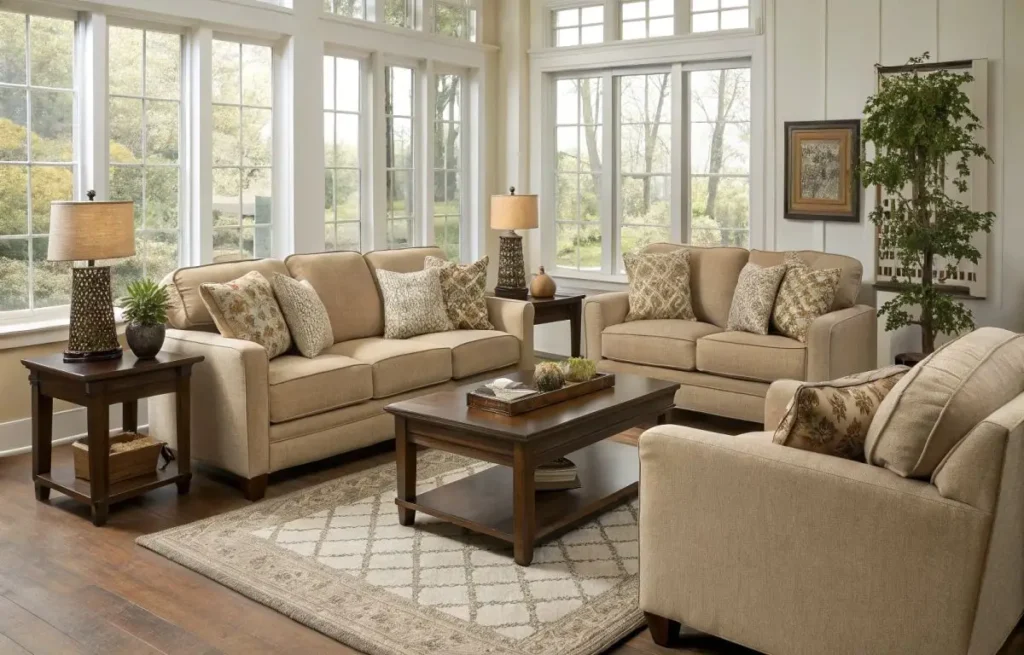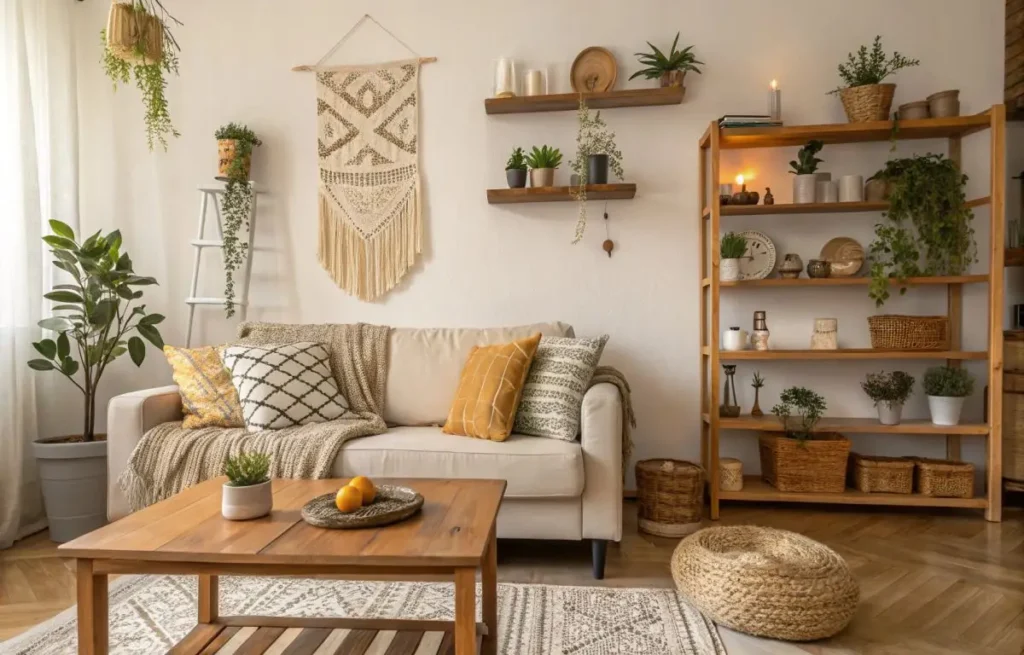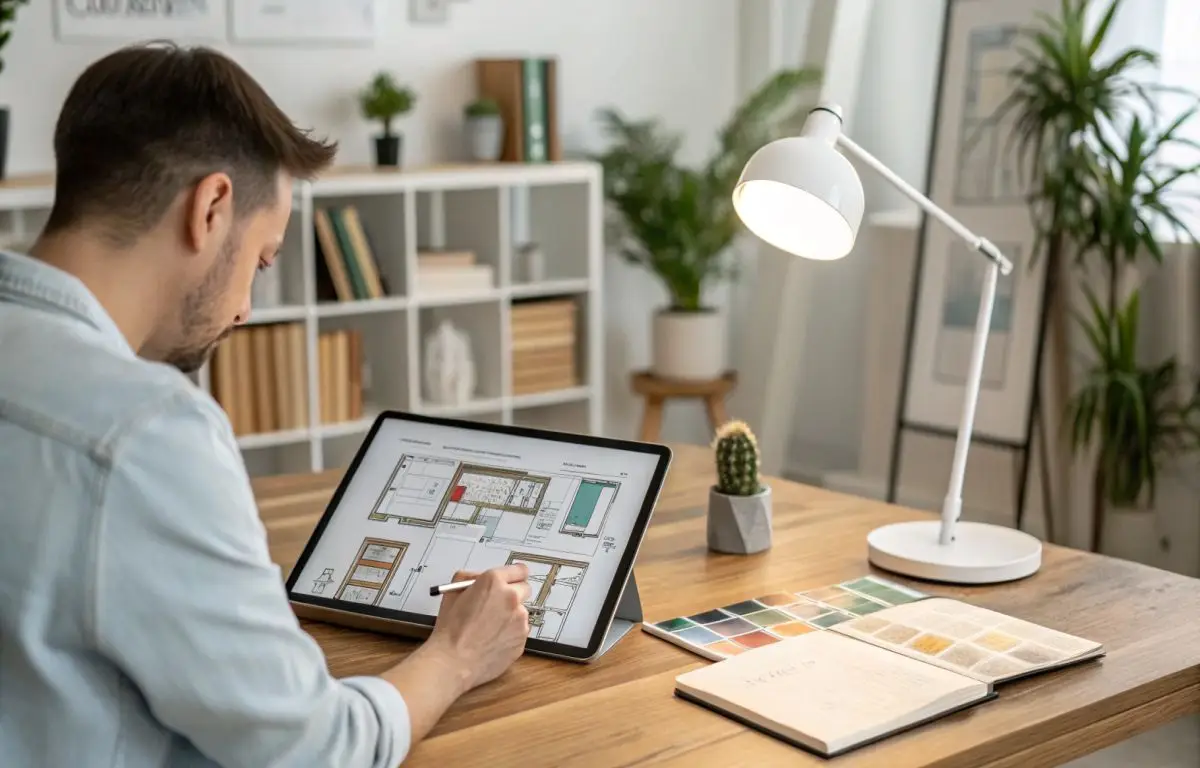Creating a strategic home interior is about more than just aesthetics. It involves thoughtful planning, functional design, and a keen understanding of how space can enhance daily life. Whether you want to improve comfort, maximize space, or achieve a seamless flow between rooms, a well-planned interior can make all the difference. This guide will help you craft a strategic home interior that balances style and practicality.
How to Plan a Strategic Home Interior for Maximum Impact
Key Elements of a Strategic Home Interior Plan
- Functional Layout: Arrange spaces to enhance movement and purpose. A well-thought-out floor plan ensures that every area serves a practical function while maintaining visual appeal.
- Zoning Techniques: Separate areas using rugs, furniture, or partial dividers. Open-concept homes benefit from defined zones that create structure without feeling restrictive.
- Lighting Strategy: Incorporate ambient, task, and accent lighting for depth. Layered lighting enhances usability and creates a warm, inviting atmosphere.
Blending Aesthetics and Functionality in Your Space
- Choose Multi-Use Furniture: Ottomans with storage, foldable tables, and modular sofas save space while adding convenience.
- Prioritize Natural Light: Use sheer curtains and mirrors to amplify brightness. A well-lit space feels more open and improves mood and productivity.
- Maintain Cohesive Themes: Stick to a consistent color palette and design style to create a harmonious feel throughout your home.
Common Strategic Home Interior Mistakes to Avoid
- Overcrowding the Space: Keep only essential pieces to avoid clutter. An uncluttered room feels more spacious and allows for better functionality.
- Ignoring Scale and Proportion: Balance furniture sizes for a harmonious look. Oversized pieces can overwhelm a room, while undersized ones can make it feel incomplete.
- Lack of Personalization: Incorporate personal decor to reflect character. Meaningful artwork, heirlooms, or travel souvenirs can make a house feel like home.
Choosing the Perfect Color Palette for a Strategic Home Interior

How Colors Influence Your Strategic Home Interior
- Warm Tones (Red, Orange, Yellow): Create energy and vibrance. These colors are ideal for social spaces like living rooms and kitchens.
- Cool Tones (Blue, Green, Gray): Promote calmness and sophistication. Perfect for bedrooms and study areas where relaxation and focus are essential.
- Neutral Shades (Beige, White, Taupe): Provide flexibility and elegance. Neutrals act as a great backdrop, allowing accent colors to shine.
Timeless vs. Trendy Hues for a Strategic Home Interior
- Timeless Colors: Whites, grays, and earth tones offer long-term appeal and blend easily with changing trends.
- Trendy Accents: Pops of bold colors like emerald green or burnt orange create a fresh and dynamic look without overwhelming the space.
- Mixing Both: Balance neutral walls with vibrant decor elements to maintain versatility.
Combining Neutrals and Accents for a Balanced Interior
- Use a 60-30-10 Rule: 60% dominant color, 30% secondary color, 10% accent to maintain visual interest.
- Layering Textures: Pair matte walls with glossy furniture to create depth and contrast.
- Contrast for Depth: Dark cabinets with light countertops enhance dimension and make spaces feel more dynamic.
Smart Furniture Placement for a Functional and Stylish Home

Strategic Home Interior: Arranging Furniture the Right Way
1. Traffic Flow
Creating a functional and comfortable space involves ensuring that there is easy movement around the furniture. A gap of 2-3 feet between pieces of furniture is ideal. This distance allows people to walk through the room without feeling cramped or restricted. It creates a natural, unobstructed path, allowing guests or family members to move freely between areas like the seating area, dining table, or other parts of the room.
Additionally, consider the flow of the space in relation to its function. For example, in a living room, the coffee table should be placed so that it’s accessible but not blocking paths between chairs or couches. Maintaining clear traffic zones ensures that the room feels open and spacious, preventing the area from feeling congested.
2. Anchor with Rugs
Rugs are a great way to define specific areas within a room. When you place a rug under furniture, it helps to visually “anchor” the seating area or another functional space, giving the room a sense of structure. The right-sized rug can add warmth, comfort, and texture to the space, making it feel more inviting and cozy.
To choose the right rug size:
- For a seating area, select a rug large enough so that at least the front legs of the furniture (like a sofa) are on it.
- For a dining area, make sure the rug extends beyond the edges of the table to allow chairs to move in and out easily.
Textures and patterns of the rug can also enhance the overall design. A plush rug can bring comfort, while a more patterned or bold rug can act as a focal point, giving the room character and style.
3. Symmetry vs. Asymmetry
The arrangement of furniture in a room can follow either a symmetrical or asymmetrical layout, and each has its own feel and advantages.
- Symmetrical layouts are more formal and balanced. If you place identical pieces of furniture or accessories across from each other (like two armchairs facing a sofa), it creates a sense of order and harmony. This type of layout is ideal for spaces where you want a more structured, refined look, such as in traditional or formal living rooms.
- Asymmetrical layouts are more relaxed and creative. By using furniture or decor that differs in size, shape, or style, asymmetry can make a space feel more dynamic and interesting. It’s great for casual, contemporary, or eclectic spaces where you want to introduce visual intrigue and allow the personality of the room to shine through. For example, a large sofa on one side of the room could be balanced by smaller accent pieces or décor on the opposite side, creating a more fluid and organic feel.
Maximizing Space with Smart Strategic Home Interior Choices
- Use Multi-Functional Pieces: Murphy beds, expandable dining tables, and nesting tables help optimize space.
- Floating Furniture: Wall-mounted desks or shelves free up floor space and maintain a clean look.
- Vertical Storage: Utilize tall bookcases, overhead cabinetry, and hanging organizers to reduce clutter.
How to Optimize Layouts for a Strategic Home Interior
- L-Shaped Arrangements: Ideal for open spaces and living areas, creating a cozy and inviting feel.
- Zoning Open-Concept Homes: Rugs, lighting, and furniture placement define different functional areas without walls.
- Focal Point Emphasis: Arrange furniture around a statement piece like a fireplace or large window for a visually striking effect.
Budget-Friendly Strategies for a High-End Home Interior Look

Where to Save and Where to Splurge in a Strategic Home Interior
- Save: DIY wall art, second-hand furniture, and thrift store finds can elevate your space without breaking the bank.
- Splurge: High-quality sofas, durable flooring, and statement lighting enhance longevity and style.
- Balance: Invest in timeless pieces while updating smaller decor elements frequently for a refreshed look.
DIY Upgrades That Elevate Your Strategic Home Interior
- Peel-and-Stick Backsplashes: Affordable and stylish kitchen updates without professional installation.
- Refinishing Furniture: Sand and repaint old pieces for a fresh, modern aesthetic.
- Custom Curtains: Handmade drapes add a luxurious feel at a fraction of the cost.
Affordable Decor Tips for a Luxurious Strategic Home Interior
- Layer Textures: Mix linen, velvet, and wood for depth and warmth.
- Use Large-Scale Art: Oversized artwork creates a focal point and adds sophistication.
- Incorporate Greenery: Plants add vibrancy, improve air quality, and bring life into a space.
Conclusion
A strategic home interior goes beyond decoration—it enhances how you experience and interact with your space. By carefully planning layouts, choosing the right colors, optimizing furniture placement, and incorporating timeless yet trendy elements, you can create a home that is both stylish and functional.
What’s your biggest challenge in designing your home interior? Let us know in the comments!
FAQs
1. What is a strategic home interior design?
A strategic home interior design focuses on optimizing both functionality and aesthetics. It involves creating a layout that enhances movement, flow, and the overall purpose of each space, ensuring your home is both beautiful and practical.
2. How do I create a functional and stylish home interior?
To achieve both style and function, start by planning your layout thoughtfully. Incorporate multi-functional furniture, zone spaces effectively, and prioritize lighting that enhances both usability and ambiance.
3. What are the best color choices for home interiors?
For a well-balanced home, use neutral tones like beige or white for a versatile backdrop. Warm colors like red or orange energize spaces, while cool shades like blue and green create calm areas perfect for relaxation or focus.
4. How can I make the most of a small living space?
Maximize small spaces by using multi-functional furniture, such as foldable tables and storage ottomans. Consider vertical storage options and keep furniture arrangements open to improve the sense of space and flow.
People Also Read:
Interior Colors Used In Open Concept Luxury Homes For Elegance
How To Choose The Best Wall Lights For A Black And White Interior

